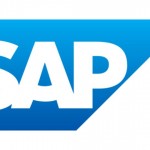Premium広告のProgrammaticbuyingが普及しないのはなぜか
Programmatic premium is largely seen as the key driver for continued growth in automated buying. It has been held up by many as a means to deliver improved yield and revenue for publishers drowning in unsold, but is programmatic buying still marginal?
There has been little sign of scaled adoption of branding through RTB. Beyond the suggestion from certain industry commentators that display advertising can not act as a demand generator, why isn’t programmatic premium seeing the early growth rates that RTB saw?
Does premium demand exist?
Perhaps there simply isn’t any ‘premium’ demand right now. Are we trying to shoe horn something that doesn’t exist? The premium demand that publishers were anticipating from creating private marketplaces was not focused on CPA performance or price efficiency.
The vast majority of private marketplaces that have scaled are still garnering low CPMs and low yield. This is an indication that at the very outset of a campaign being planned, trading desks, et al have not secured sufficient buy-in on the concept of buying premium inventory on premium publishers at prices that are not typical of previous trading desk pricing.
At the planning stage, are these private marketplaces being surfaced where an advertiser agrees to buy inventory at CPMs in the £10 region to overlay 1st/3rd party data and dynamically optimise the message? The answer to this question is likely no.
Typically, a trading desk will get access to an agreed budget with a performance goal and a CPM price ‘guide’. One way to start scaling this opportunity is having these private marketplaces represented on anything a client signs as a separate line item. Right now, the vast majority of campaigns are not premium in nature, and as a result private marketplaces are ultimately scrutinised along with every supply source.
Is RTB suited to premium?
RTB was initially designed for performance advertisers. DSPs were created to exploit price inefficiencies from buying at scale. This is at odds with the way premium publishers are trying to sell in automated channels.
In RTB, inventory is bought ‘one impression at a time’. This very phrase is hard-coded into traders’ minds. This makes it hard to sell against. Publishers are left in the cold. Outside the US, the concept of programmatic guaranteed buys is practically non-existent. Publishers have no idea how many impressions will be bought on these so called ‘premium’ campaigns.
There is, of course, a correlation with those publishers operating private marketplaces with low floors versus those with higher floors. It is still a price-driven marketplace. No one is measuring value versus price. If this is the case, why would the ‘super premium’ publishers engage in this space?
How can data-driven premium exist?
Lets assume for a second that all private marketplace buys moved to a guaranteed model. How do you then make this data-driven? If you offer the ability to decision on that inventory, does that make it non-guaranteed? Or should we be looking simply at buys being REQUIRED to fill every impression, with the ability to optimise creatives based on the data available? Is this any more sophisticated than standard ad serving in DFA?
What are brands doing right now?
Lets look at some examples:
Kellogg’s: Kellogg’s has been a strong advocate of RTB. They even have a column over at our friends, Adexchanger. The early signs of its adoption of RTB should concern publishers. It has gone on record, with Google, at a recent IAB event about how it has optimised media buying to under $1 CPM. If this is an example of ‘premium demand’ in the automated channels, then would publishers be better off running more house ads?
P&G: P&G and Audience Science have a working relationship which effectively enables P&G to buy premium inventory, at prices agreed upfront with certain publishers, but only targeting the audiences they want. This does pose a challenge for publishers around forecasting. Predictive inventory forecasting tools on audience segments is something sorely missing within the industry. A company in Portugal (ShiftForward) is currently working on a solution, and perhaps this will enable this opportunity to scale, efficiently for both parties.
Should publishers get real?
Maybe the challenge with this whole concept of ‘premium’ is simply that sliding CPMs over the long term is inevitable. Print media is dying, and for some publications, is dead. Migration to digital-only models has failed to plug the revenue gap. Is this due to a transition period, or will publishers inevitably need to seek creative multi-revenue models beyond being 100% ad-funded?
Advertisers will speak with their spend. If this is at odds with what publishers expect, then publishers will simply need to toe the procurement line and gain some sense of realism that advertisers aren’t prepared to pay the prices they’re looking for; not unless the data shows they should. Right now it’s unlikely, at any significant scale, that performance metrics will be pushing prices up to double-digit CPMs. Perhaps brand-led metrics will?
Programmatic premium will no doubt dominate the pages of the trade press for the foreseeable future. But it seems that we as an industry are in a position that resembles something like:
1) You have the ability to decision every single impression, overlay supreme amounts of data, personalise every individual message and pay a unique price for every single impression. This, currently, has created what some call ‘a race to the bottom’. Once you’ve exhausted the scale you can achieve against a first-party data segment, it becomes a case of “how cheaply can it be bought”? The primary reason for this is because decisioning rules, baked inherently into the algorithms of buying platforms, is based on CPC or CPA delivery. Of course, you could choose to just ‘spend’, but again, most DSPs are incentivised to deliver this at the lowest cost.
2) You have the ability to guarantee premium inventory and execute it through an API. You can’t optimise this. You can just amend the message based on data signals such as IP address, user agent, cookie information (mapped to other sources).
What are we missing here? Lets stop the prophesising. Lets build a clear framework for executing this. Is ExchangeWire trying to create a new ‘action group’ or ‘task force’ aka the IAB? No, of course not. ExchangeWire just wants to help create a clear path to building the future of programmatic branding, so advertisers and publishers can both get on board.











